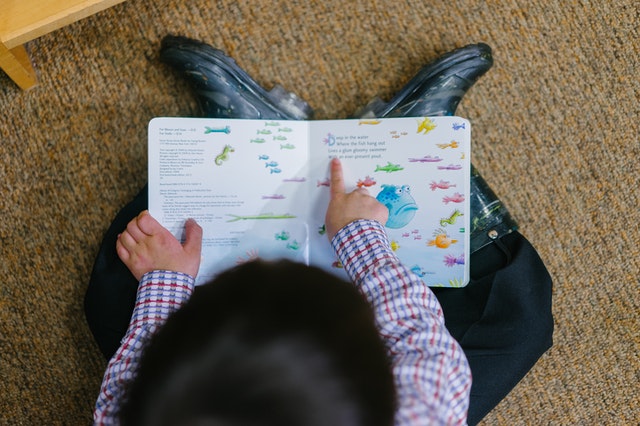Teachers at times tend to believe that summary writing is easy, and students should be able to do it without being taught; they will sometimes make an assignment to “read and summarize the article,” for example, without much direction.
However, summary writing isn’t that simple. In fact, it’s a difficult academic skill. As with any new skill, especially a writing skill, students need to be explicitly taught.
What Exactly is a Summary?
A summary is a long text condensed to its essentials, the key points worth noting, and without examples and details. The specific form, the sentence structure and the vocabulary are changed, but the main ideas remain, but in a much shorter version.
Why Teach Summaries?
- Again, summary writing doesn’t come naturally, and when told to summarize, students will often either copy verbatim, write long, detailed “summaries,” or write excessively short ones missing key information. This is because students don’t really know what a summary is or how to write one. If they have been told how to write one, it is usually in nonspecific terms, such as “Put the story in your own words.” This is not technical enough to be helpful. The concept needs to be explained to them. Summarizing is actually a specific and technical skill.
- Writing a summary is an important tool that students will use throughout their academic careers. Summarizing improves reading skills as students pick out the main ideas of a reading; it also helps with vocabulary skills as students paraphrase a reading, altering the vocabulary and grammar as they do so. In addition, critical thinking skills are improved as students decide on the main ideas of the text they need to include in the summary. Finally, writing and editing skills are improved as students draft and edit the summary. Students can also work with peers throughout the writing and revision process, so it also helps with cooperative learning. Therefore, there are many benefits to teaching summarizing skills.
Steps to Teaching Summary
-
1
As a class, read a short selection.
This can be either a short essay or part of one. It should be short enough that students can read it in the first part of your class session. Some suggestions are “short –short stories” or biographies of important people like Dr. Martin Luther King or other figures familiar to your class. Other examples are short expository readings from the fields of science, education, or history. But begin with something fairly simple and appropriate to the level of your class, until they grasp the concept
-
2
Have students underline the main ideas as they read.
Underlining the main ideas will make the points stand out and therefore easier to remember. These will help when they make their summary. Take this opportunity to talk to the students about the importance of marking text as a study skill. They can use this marked text as an outline to review later for quizzes.

-
3
Once students have their texts marked up, open a discussion on summaries.
Discuss what they are. Offer a clear example of their importance: for example, “How long is the movie "Titanic"? Over three hours. If someone asked you tell her about the movie, would you talk for three hours? Of course not! What would you do?” This gets students focused on the notion of summarizing as something they actually do in their everyday lives. -
4
Provide an example.
The teacher might consider also handing out an example summary of "Titanic" or something students have recently read—not the reading they are working on in this lesson—as a model of a summary. -
5
Discuss the marked ideas.
At this point, discuss the ideas students underlined in their readings. Call on students to share the main ideas they underlined and write them on the board. These can even be in point form.
-
6
Focus on 5 main ideas.
As a class, decide on the top five main ideas for the summary. -
7
Work on ordering the sentences and connecting them with transition words.
Since the main ideas are drawn from different sections of the text and distinct from each other, it is important to connect them. This is a good time to teach some transition words of time or of addition. -
8
Paraphrase the sentences.
An important concept related to summarizing is changing the summary significantly from the original. Practice changing the grammar and vocabulary of the sentences, and have the students help with this as much as they can. This is a good way to help expand their vocabularies. The teacher can refer back to the "Titanic" example at this point as needed: “Would you use the exact words as the film when describing it to your friend? Or would you use different words that mean about the same thing?”
-
9
Teach the language of summaries.
At this point, the teacher might teach students some of the formulaic language of academic writing, such as the phrase “According to (the author), “ to lead into the main idea and the summary.
-
q
Finalize.
Put any needed final touches on the summary, such as an overarching idea to lead with. Also teach concluding sentences that restate the main idea. -
w
Give out another short reading selection. Have students work on reading and marking the selection and then writing their summaries by themselves this time or in pairs.
-
e
It might be helpful at this point to instruct students to first do the reading and marking, and then close the reading. Then, without referring to it, tell their partner what it was about. The partner can take notes on the retelling, and then they can compare it to the original, making adjustments, such as adding missed main points or deleting details.
Why learning to summarize is helpful to students
It helps them have a better understanding of what they have read.
It helps them focus and pinpoint the main ideas in a text.
It helps them recognize the most relevant information in the text.
It’s a skill they can use in other areas of their studies.
Summarizing: A basic outline
Read the text more than once at a reasonable pace Review it and look for the points that stand out. Breaking it into sections helps. Underline the main points. Write your summary. Check your summary. Read through the original and check your summary to see if it properly reflects the facts and if you have left anything out. End by reiterating the opening points and don’t include your own opinions.
Summary writing isn’t easy and isn’t a skill that comes naturally.
However, it is a skill worth the time and effort as students will use it throughout their academic careers and the benefits it provides in reading, writing, and critical thinking skills. It also provides students with a great study skill to help them review information before a big test.
P.S. If you enjoyed this article, please help spread it by clicking one of those sharing buttons below. And if you are interested in more, you should follow our Facebook page where we share more about creative, non-boring ways to teach English.








